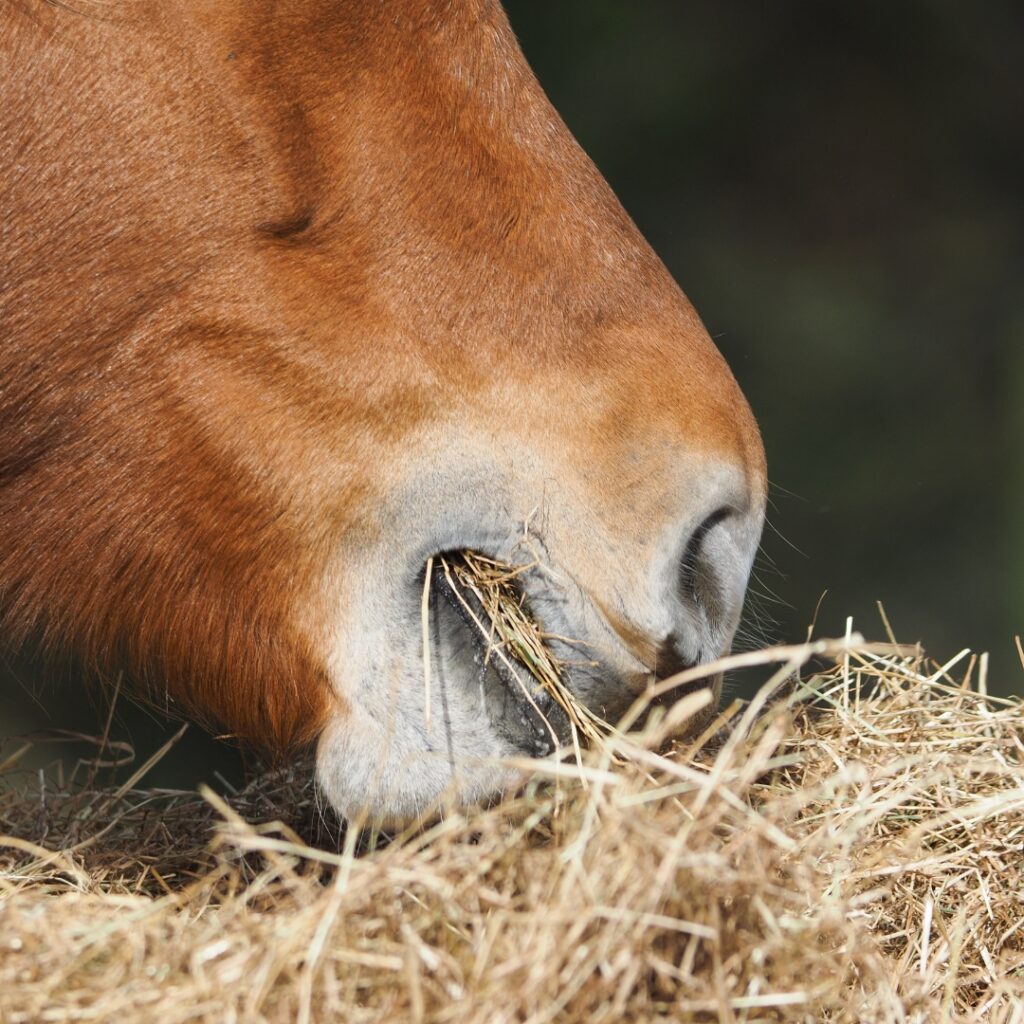
Loss of topline is a common nutritional concern amongst horse owners. The topline is composed of a group of muscles that run down the vertebral column of the horse’s spine. Ideally, you do not want this area to appear concave, it should be adequately covered in muscle without any sunken-in areas or areas of fat accumulation.

Various factors play a role in topline maintenance of the horse, and there are a variety of reasons that a horse may lose topline. Of course, nutrition can be a key factor, but age, exercise, health status, incorrect saddle fit, and back pain are a few of the other factors that may contribute to a loss of topline muscling. If you have concerns over your horse’s condition and topline, please have your veterinarian evaluate the animal as underlying medical conditions such as pituitary pars intermedia dysfunction – also referred to as equine Cushing’s disease (PPID) and polysaccharide storage myopathy (PSSM) can be an underlying cause of muscle wasting.
After underlying medical issues have been ruled out or are being medically managed – it is time to dive into the nutrition aspect of muscle loss. Horses require six nutrient classes, one being protein. Protein is crucial for body tissue and plays important roles in enzymes, hormones, and antibodies. Proteins are comprised of amino acids, there are 21 amino acids, and 10 of those are considered essential. This means that the horse is unable to make them, therefore they must be supplied in the diet.
The NRC (2007) Nutrient Requirements of Horses outlines a requirement for lysine, however the exact requirement for each of the other essential amino acids has yet to be established. Despite this, it is well accepted that the first three limiting amino acids for horses are lysine, threonine, and methionine. This is because when they are not provided in adequate quantities both muscle growth and repair may be compromised.
Although protein is crucial to muscle development and maintenance, the digestible energy in the ration must also be adequately provided to the horse. This is a common issue in equine nutrition, where the protein will end up being supplemented, but the digestible energy in the ration is still not being met. Additionally, not all protein is equally beneficial to the horse. There are both high-quality protein sources and low-quality protein sources.
The characteristics that define high-quality protein are that it needs to be readily digestible, and it needs to provide the horse with essential amino acids. Depending on which protein source is fed to the horse will alter the amino acids they are getting. Some examples of high-quality protein sources are alfalfa, soy, flaxseed meal, canola meal and sunflower meal.
Prior to beginning to add protein to the diet it is highly recommended to have your hay tested. Forage can be a great source of protein for horses, because after all, it is what they have evolved to consume. Testing your hay will also provide you with valuable information on the energy content. That way a nutritionist will be able to determine if your horse requires more energy, more protein or more of each in the ration.
Additionally, any undetected nutritional deficiencies can also impact muscle health, for example vitamin E. Therefore, if you have nutritional concerns, start with a hay analysis – then consider consulting a qualified equine nutritionist to ensure that all of your horse’s nutritional requirements are met with optimal ingredients.
To conclude, if your horse has lost topline, first having your veterinarian evaluate for any underlying health issues and then investigating their diet is recommended. Don’t forget to consider other factors such as exercise and saddle fit. It truly takes a team to optimize equine well-being, therefore finding a team of professionals that share information and work together is a great asset to your horse’s well-being.
By: Madeline Boast, MSc. Equine Nutrition
References:
Antilley, T. J., Potter, G. D., Gibbs, P. G., Scott, B. D., & Claborn, L. D. (2007). Evaluating the technique of using nitrogen retention as a response criterion for amino acid studies in the horse. Journal of Equine Veterinary Science, 27(12), 525-530.
Graham-Thiers, P. M., & Bowen, L. K. (2011). Effect of protein source on nitrogen balance and plasma amino acids in exercising horses. Journal of animal science, 89(3), 729-735.
Graham-Thiers, P. M., & Kronfeld, D. S. (2005). Amino acid supplementation improves muscle mass in aged and young horses. Journal of animal science, 83(12), 2783-2788.
Mok, C. H., & Urschel, K. L. (2020). Amino acid requirements in horses. Asian-Australasian Journal of Animal Sciences, 33(5), 679.
Copyright © 2024 Balanced Bay Nutrition | Site Crafted by Bay Mare Design